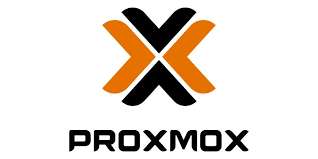Read the article to know the steps to add external Ceph storage on Proxmox. Bobcares, as a part of our Proxmox Support offers solutions to every query that comes our way.
Adding external Ceph storage on Proxmox
We can combine Ceph storage with Proxmox VE to act as a central repository for VMs and containers. We can take the following actions to add external Ceph storage to Proxmox VE:

Steps
1. Set up and manage the Ceph cluster: Firstly, we need to create a working Ceph cluster for adding Ceph storage to Proxmox. Then a Ceph cluster can be set either using VMs or separate hardware. Depending on the setup we want, there are many guides for deploying Ceph available.
2. Build Ceph Pools: Then we build storage pools within the Ceph cluster where data will be kept. Depending on the needs, each pool can have a variety of features such as replication or erasure coding.
3. Installing and configuring Proxmox VE: Now, install Proxmox VE on the servers that will house the VMs as well as containers.
4. Create Proxmox Hosts with Ceph Utilities: The needed Ceph tools must be installed on each Proxmox VE host that will use the Ceph storage. Also, Proxmox VE can communicate with the Ceph cluster with the aid of these tools.
5. Setup Ceph Access: In order for Proxmox VE to access the storage pools, it must firstly authenticate with the Ceph cluster. To enable Proxmox VE to connect with the Ceph cluster, the required authentication credentials and network configurations must be provided.
6. Add Ceph Storage to Proxmox VE: To add Ceph storage to the cluster, use the Proxmox GUI or Proxmox VE web interface. Proxmox VE is instructed to use the Ceph cluster as a storage backend for virtual machines and containers by performing this step.
7. Confirm the Configuration: It’s critical to confirm that Proxmox VE can connect to the Ceph cluster and access the necessary storage pools after installing the Ceph storage.
8. VM and container creation on Ceph storage: After the setup is complete, we will then create VMs and containers that use the Ceph storage. We will also have the ability to select the storage location for each virtual machine or container during the creation process.
[Looking for a solution to another query? We’re available 24/7.]
Conclusion
To sum up, the article provides an 8-step method from our Tech team to add external Ceph storage on Proxmox.
PREVENT YOUR SERVER FROM CRASHING!
Never again lose customers to poor server speed! Let us help you.
Our server experts will monitor & maintain your server 24/7 so that it remains lightning fast and secure.







0 Comments